


|
|

|
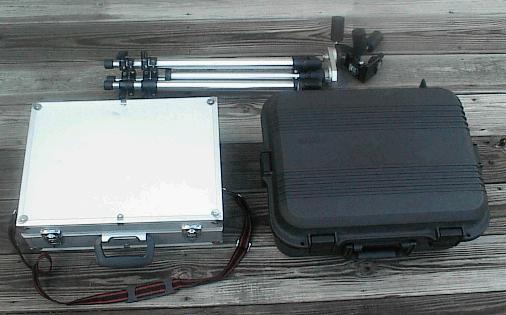
|
The photo on the right shows my gear all packed up and ready to go. At the
top is my Bogen 3011 tripod and 3030 head. This is
an extremely sturdy tripod, and at $137.95 (May '99 price at
B&H Photo, it's a much better deal than the Meade field tripod. The case on the right is a Doskocil extra-large Seal-Tight case, and the one on the left is my eyepiece case. Scroll down for more on these cases. |
|
This is the main scope case open to show how all my gear fits in. As I
mentioned, this is a Doskocil extra-large Seal-Tight case, which I got for
$69.95 from B&H Photo. It came
with the customizable foam, which made it easy to create spaces for my
various items. The case is 20.8" x 16.5" x 9.3" in size. In the lower left is my Rigel QuickFinder, which is a wonderful thing. To the right of that is the flexible dew shield that came from Scopetronix. It's a flexible closed-cell foam, so it rolls up for easy storage. The ends connect together with Velcro. Above the finder and dew shield you see the cable connecting the hand controller for my MicroStarII+ to the ETX. There's the ETX itself, and finally in the upper-left, my compass and bubble level. Look carefully and you can see where I've filled in some spaces with foam plugs. I used to keep other things in here until I got the larger eyepiece case (see below). |
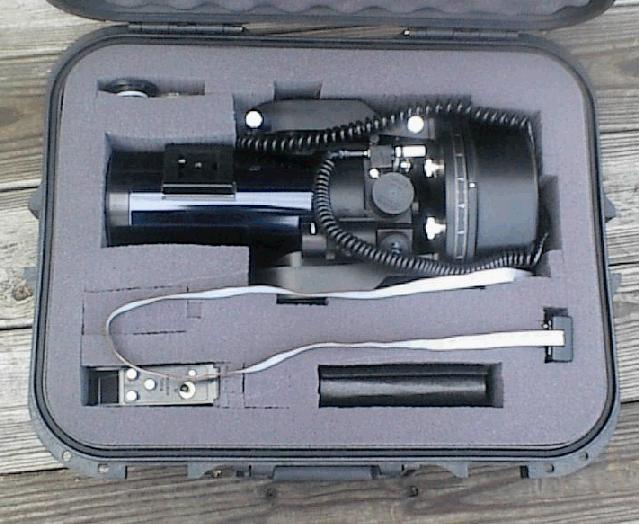
|

|
The Doskocil case has 2 layers of foam, so tucked away here in the second layer are a few things I don't need very often. Below the scope to the left are spare batteries, spare belts and other parts for the MicroStarII+. To the right are the original ETX tripod legs and a double-headed screwdriver. Sticking up out of the foam on the right edge of the case is a cardboard triangle I use to set my tripod for the correct angle for my latitude. Here's how I made it. |
|
This beauty of a case came from WalMart for only $19 or so! It measures
18" x 13", and the bottom part is 3.5" deep. It's got aluminum sides and
comes with the cubed foam that you can cut any way you want. There was
a big discussion in the sci.astro.amateur newsgroup as to whether this
foam was "outgassing" and whether it would adversely affect optics. I
left the foam to air out for a week, and haven't had any problems.
Along the top from left to right I have the controller for my Kendrick Dew Remover system. The cord going across to the right connects it to the power source, a 12V, 7 amp-hour battery from Scopetronix. To the right of that is a space for a little keychain red LED flashlight. Furthest to the right are my LensPens. |
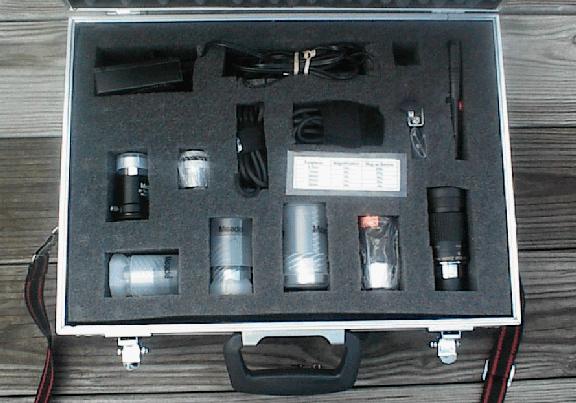
|
| Here's the whole setup. This angle gives a clear view of the Kendrick heater elements, the dew shield, the QuickFinder, the Apogee right-angle finder and the controller for the MicroStarII+. The controller is sitting on an offset plate made especially for the Bogen tripods and the ETX. This is a great add-on that puts the ETX's center of gravity over the center of the tripod. More information is available in the tripods section of Mike Weasner's Mighty ETX Website, but I've been informed the maker's email address no longer works. A little Velcro on the controller and the offset plate, and I always know where the controller will be. With the Kendrick system and the MicroStarII+, there are quite a few wires now! The coiled ones are all part of the MicroStarII+ while the straight ones are for the Kendrick. |
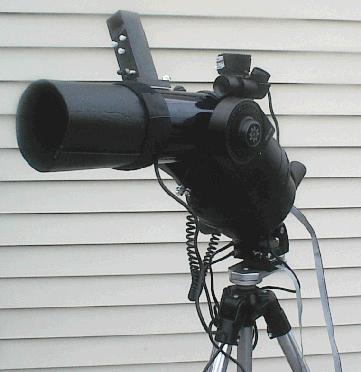
|
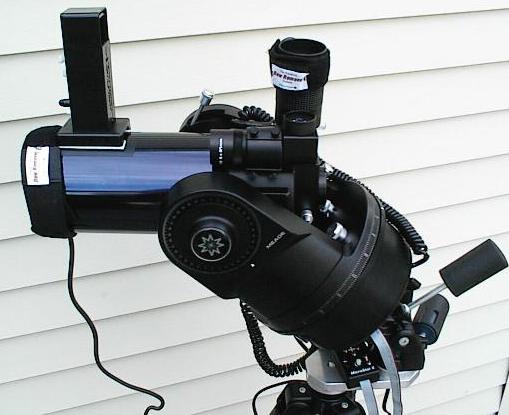
|
Looking town on the scope from the side, you can see the Kendrick heating elements clearly as well as the Apogee right-angle finder and the the controller for theMicroStarII+ again. |
| Here's the view from the rear. You can see the focuser pulley for the MicroStarII+ clearly as well as the Kendrick eyepiece heater element and the QuickFinder. |

|
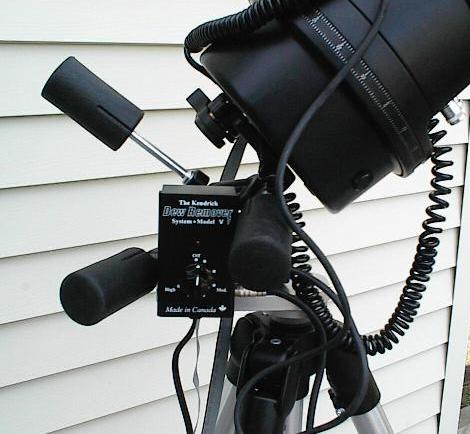
|
Here's a closeup of the Kendrick Dew Remover controller. It's held onto the side of the tripod with Velcro - the amateur astronomer's other gift from god! |
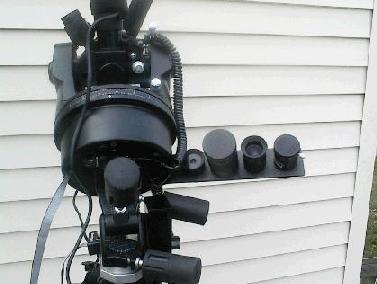
|
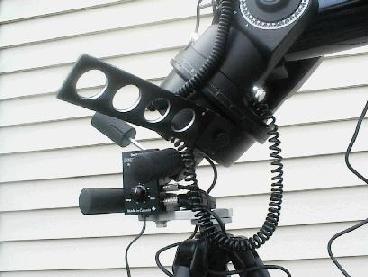
|